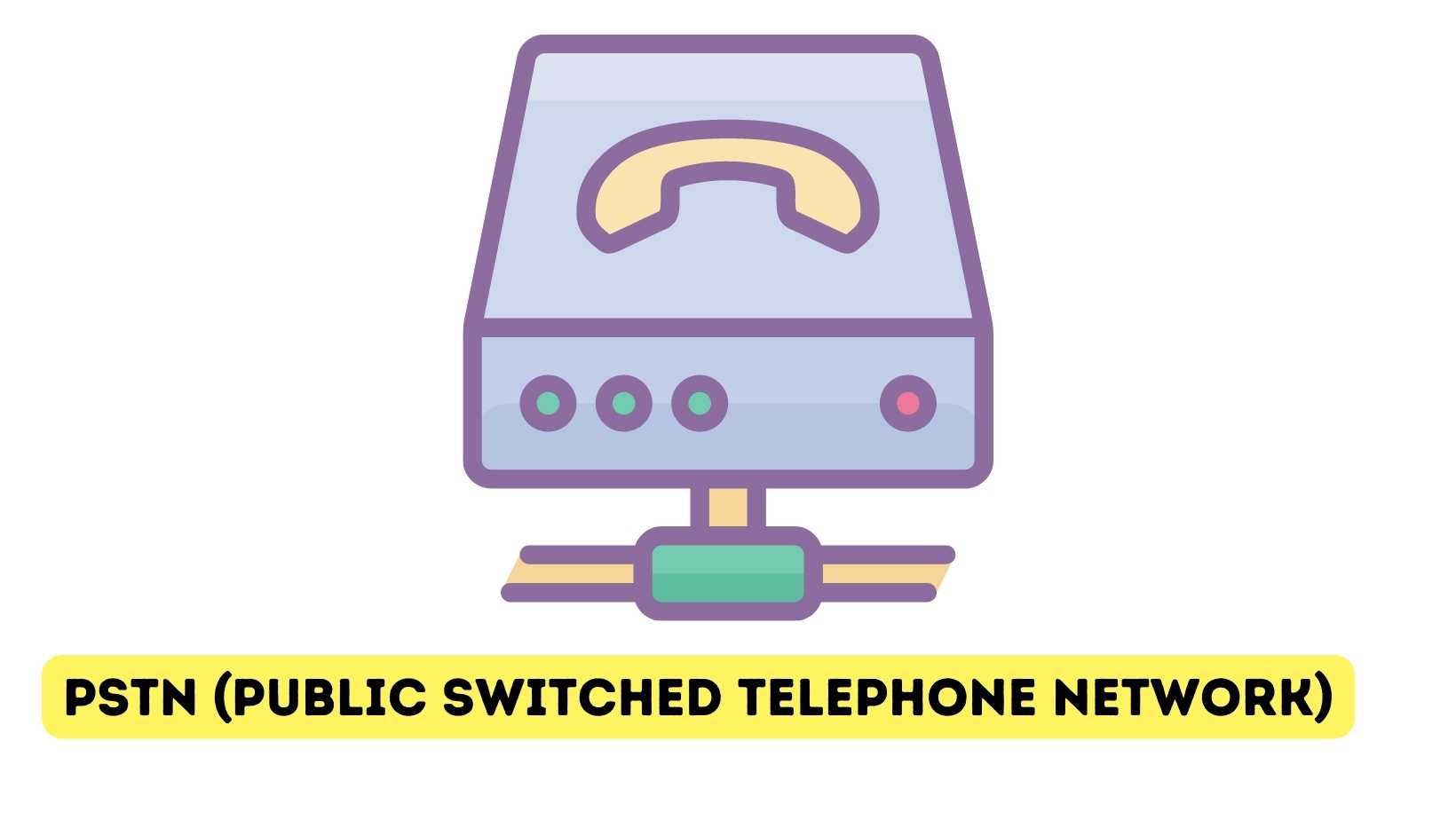Introduction
The Public Switched Telephone Network (PSTN) has been the backbone of traditional telecommunication for decades. PSTN is a fundamental infrastructure that has played a crucial role in connecting people through traditional landline phones for many decades. In this article, we will explore what PSTN is, how it works, its components, advantages, disadvantages, and its significance in the world of telecommunications.
What Is PSTN?
The Public Switched Telephone Network, commonly known as PSTN, refers to the global network of circuit-switched telephone networks that enable voice communication over traditional landline telephones. It is a collection of interconnected telephone lines, cables, satellites, cellular networks, and switching centers managed by telecommunication operators worldwide.
PSTN was established long before the advent of digital communication technologies. It relies on analog signals to transmit voice data from one telephone to another using a physical connection. Unlike modern Voice over Internet Protocol (VoIP) systems that use the Internet to transmit voice packets, PSTN operates on a dedicated infrastructure specifically designed for analog telephone calls.
The History of PSTN: From Landlines to Digital Networks
The Public Switched Telephone Network (PSTN) has a rich history that dates back to the early days of telecommunication. Let’s take a journey through time to understand how PSTN has evolved over the years.
- Telegraph and Early Telephone Networks: In the 19th century, telegraph networks laid the foundation for long-distance communication. The invention of the telephone by Alexander Graham Bell in 1876 led to the establishment of the first telephone networks.
- Development of Landline Infrastructure: Throughout the 20th century, PSTN expanded with the installation of copper wire networks. These landline connections allowed voice communication across regions and countries.
- Digital Transformation: With the advent of digital technology, PSTN gradually transitioned from analog to digital networks. This shift brought significant improvements in call quality, capacity, and the introduction of new services.
How PSTN Works: An Overview of the Technology
Understanding the technology behind the Public Switched Telephone Network (PSTN) is crucial to grasp how it enables communication. Let’s explore the key aspects of PSTN and how it works.
Analog Signal Transmission
- PSTN operates using analog signals for voice transmission.
- When you speak on a landline telephone, your voice is converted into analog signals.
- These analog signals travel over copper wires or fiber optic cables, carrying the voice information.
Circuit Switching
- PSTN utilizes circuit switching to establish dedicated communication paths between callers.
- When a call is initiated, a dedicated circuit is established between the calling and receiving parties.
- This circuit remains open for the duration of the call, allowing real-time voice communication.
Switching Centers
- PSTN relies on switching centers to route and connect calls.
- Switching centers are physical locations equipped with switches and network nodes.
- These centers direct calls to their intended destinations by identifying the optimal path through the network.
PSTN Components: Exchanges, Trunks, and Loop Circuits
Understanding the components of PSTN is essential to grasp how the network operates.

Let’s explore the key components of PSTN and their roles in facilitating communication.
Exchanges
- Exchanges are the core components of PSTN responsible for connecting individual telephone lines and facilitating call routing.
- Each exchange serves as a central hub where multiple telephone lines converge.
- Exchanges are equipped with switching equipment that directs calls to their intended destinations.
- They handle the setup, maintenance, and termination of calls, ensuring seamless communication.
Trunks
- They play a crucial role in PSTN by providing high-capacity communication channels for the transmission of voice signals.
- Trunks carry multiple voice channels simultaneously, allowing for efficient communication between exchanges.
- They serve as the backbone of PSTN, enabling the establishment of connections between different parts of the network.
Loop Circuits
- Loop circuits, also known as subscriber lines, form the physical connections between the telephone exchange and the subscriber’s telephone.
- They enable the transmission of voice signals between the exchange and the end-user.
- Loop circuits are typically made of copper wires or, in modern installations, fiber optic cables.
- Each subscriber line is dedicated to a single telephone number, allowing for individual connections to the PSTN network.
- Loop circuits carry the voice signals generated by landline telephones and transmit them to the appropriate exchange for call routing.
Advantages of PSTN: Reliability, Ubiquity, and Low Cost
PSTN offers several advantages that have contributed to its widespread use and popularity:
- Reliability: PSTN has a proven track record of reliability. It operates on a dedicated infrastructure separate from the internet, making it less susceptible to disruptions caused by internet outages or network congestion.
- Ubiquity: PSTN has extensive coverage and is available in most regions around the world. It reaches remote areas where other communication technologies may be limited or unavailable.
- Low Cost: Traditional landline phone services offered by PSTN are often cost-effective, especially for long-distance calls. Local calls within the same geographical area are typically charged at a flat rate or included in a monthly subscription plan.
Disadvantages of PSTN: Limited Bandwidth, Prone to Disruptions
Despite its advantages, PSTN also has certain limitations and disadvantages:
- Limited Bandwidth: PSTN’s analog infrastructure imposes limitations on the amount of data that can be transmitted simultaneously. It restricts the transmission of high-quality multimedia content over traditional PSTN connections.
- Prone to Disruptions: Like any other communication system, PSTN is susceptible to disruptions. Power outages, equipment failures, and natural disasters can cause service interruptions, affecting connectivity.
The Future of PSTN: Transition to VoIP and Next-Gen Networks
As technology continues to advance, the future of PSTN lies in its transition to Voice over Internet Protocol (VoIP) and next-generation networks. Here’s a glimpse of what lies ahead:
- Transition to VoIP: VoIP technology allows voice communication to be transmitted over the internet using IP (Internet Protocol). Many telephone service providers are gradually shifting towards VoIP-based solutions. This transition offers numerous benefits, including cost savings, scalability, and integration with digital services.
- Benefits of VoIP: VoIP systems offer cost savings, flexibility, and advanced features. Calls made over the internet can be significantly cheaper, especially for long-distance and international calls. VoIP also provides the flexibility to add or remove phone lines easily, and it offers advanced features like call forwarding, voicemail to email transcription, and video conferencing. You can view website to know more.
- Next-Generation Networks (NGNs): NGNs, also known as IP-based networks, are the future of telecommunications infrastructure. These networks integrate various communication services, including voice, data, and multimedia, over a single IP-based platform. NGNs provide enhanced communication services, increased bandwidth, and improved efficiency compared to traditional PSTN.
- Advantages of NGNs: NGNs offer a wider range of communication services beyond voice, including video conferencing, instant messaging, and multimedia sharing. They leverage high-speed internet connections to provide greater bandwidth capacity, enabling higher-quality voice and multimedia transmissions. NGNs also promote convergence, simplifying infrastructure management and integration with digital services.
- Challenges: The transition from PSTN to VoIP and NGNs poses challenges. Upgrading and migrating existing PSTN systems to digital technologies can be complex and costly due to the existence of legacy infrastructure. Ensuring seamless interconnection and compatibility between different networks and service providers is also a significant challenge. Additionally, regulatory frameworks need to adapt to the changing landscape to support a smooth transition.
Conclusion
In conclusion, the Public Switched Telephone Network (PSTN) has been the foundation of telecommunications, providing reliable and widespread connectivity for voice communication. While it has its limitations, such as limited bandwidth and vulnerability to disruptions, the future of PSTN lies in its transition to VoIP and next-generation networks. This shift promises improved efficiency, broader service offerings, and seamless integration with digital platforms, shaping the future of communication.
FAQ
How Does PSTN Differ From VoIP?
PSTN relies on dedicated analog or digital circuits to transmit voice calls, while VoIP uses the internet and IP technology to transmit voice over data networks.
Can PSTN Transmit Data Other Than Voice Calls?
While PSTN was primarily designed for voice communication, it can transmit limited amounts of data at slower speeds. However, its bandwidth capacity is not ideal for high-speed data transmissions.
Is PSTN a Packet Switched Network?
No, PSTN is not a packet-switched network. It is a circuit-switched network.
Are There Any Alternatives to PSTN for Voice Communication?
Yes, alternatives to PSTN include Voice over IP (VoIP) services, mobile networks, and other internet-based communication platforms.










